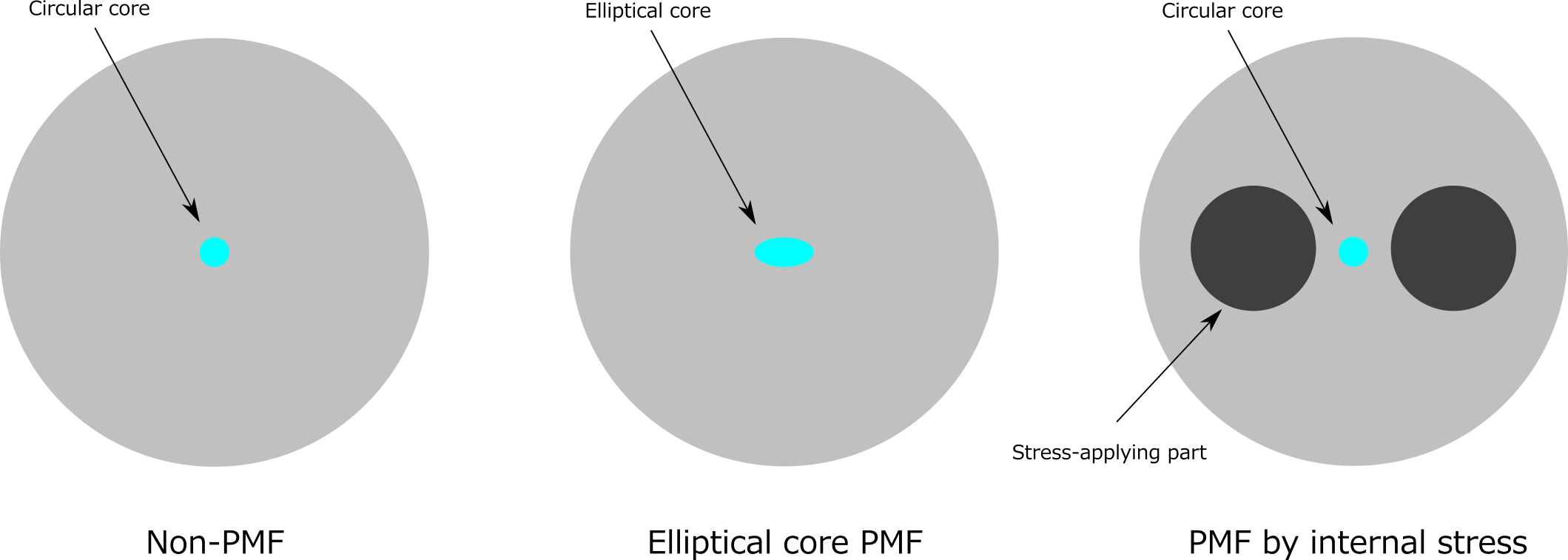Contents

Source: FiberLabs Inc.
Understanding Polarization-maintaining Optical Fibers
Optical fibers are integral components in modern communication systems, known for their ability to transmit light over long distances with minimal loss. However, a common issue with standard optical fibers is birefringence, which can cause the polarization of light to change unpredictably. This post delves into how polarization-maintaining fibers address this challenge.
The Challenge of Birefringence in Optical Fibers
Birefringence in optical fibers arises due to mechanical stresses or imperfections in the fiber material, causing the polarization of light to change as it propagates. This effect is undesirable in applications where maintaining a stable polarization state is critical, such as in interferometers and fiber-optic gyroscopes. The random nature of birefringence can be influenced by environmental factors like bending and temperature.
What are Polarization-maintaining Fibers?
Polarization-maintaining (PM) fibers are specially designed to counteract the effects of birefringence. Unlike standard fibers, PM fibers have a strong built-in birefringence. This design ensures that if light is launched with its polarization aligned along one of the fiber’s birefringent axes, the polarization state remains stable, even if the fiber is subjected to bending or environmental changes.
Mechanisms Behind Polarization Maintenance
The effectiveness of PM fibers is attributed to coherent mode coupling. The fiber’s design ensures that the propagation constants of the two polarization modes differ significantly. This difference makes it challenging for external disturbances to couple the modes effectively, as the disturbances would need to match the propagation constant difference precisely.
Designs of Polarization-maintaining Fibers
There are several designs for PM fibers, each utilizing different mechanisms to achieve high birefringence:
- PANDA Fibers: These fibers incorporate stress rods made from boron-doped glass on either side of the core, introducing mechanical stress that maintains polarization.
- Bow-tie Fibers: Similar to PANDA fibers but with stress elements shaped to reach closer to the core, enhancing birefringence.
- Elliptical Core Fibers: These rely on the core’s elliptical shape to induce form birefringence without mechanical stress.
- Photonic Crystal Fibers: These utilize an asymmetric arrangement of air holes to achieve strong birefringence, sometimes enhanced with stress elements.
Applications and Limitations
PM fibers are essential in applications where polarization stability is crucial, such as in fiber-optic sensors and laser systems. However, these fibers are typically more expensive than standard fibers. They also require precise alignment during installation, and not all fiber types are available in polarization-maintaining versions. Additionally, PM fibers can have higher propagation losses.
Conclusion
Polarization-maintaining fibers play a vital role in ensuring stable light polarization in various advanced optical devices. By understanding their design and application, engineers and scientists can better utilize these fibers to enhance the performance and reliability of optical systems.


Source: YouTube
Feel free to comment your thoughts.



